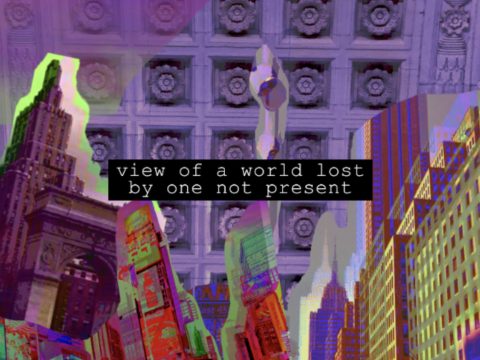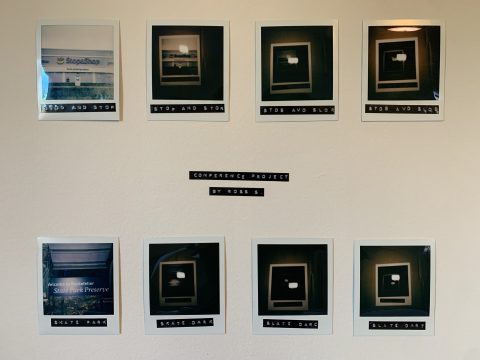Towards the very beginning of this semester, we were given the task of completing an ‘I remember’ exercise. In such, the words “I remember” are repeated and what results is a series of simple sentences all beginning with the words “I remember.” In my experience with this exercise, I found myself following a stream of consciousness thinking about and reminiscing over a certain part of my life, around 2015 to 2017. However, I found it difficult to place myself within these memories. I created a painted and image transfer collage of some of the images and scenes of the memories I had been thinking about in the original assignment.

If I think back to my motivation of choosing this form for the piece, I primarily think about the actual process of image transferring. For me, the process of gluing an image face down or placing face down on wet paint only to peel and scrape up the paper felt very destructive. The process of transferring the image onto the page involved destroying the original physical copy itself. However, this process ended up becoming a very therapeutic experience for me as I was able to view and think deeply about individual moments and images while acknowledging all of the stages those memories have been through with the passing of time.
This process involved painting a base layer of acrylic paint and, when dry, mod-podging printed out images face down onto the service of the page. When dry, the back of the glued images are wet to soften the paper and ultimately scrape it up, leaving the image behind. This process was repeated several times, often with images overlapping each other and being painted over. In addition to images, I transferred the text of a current newspaper. The reversed and distorted text overlaying the images of my memories adds to the layers of information on the page, making it even more disorienting, and helps to further represent the passing of time. In each of the images with myself present, I am cut out or painted over. I often find it hard to place and see myself in these memories.
This piece, to me, is more the result of thinking about my memory than a true finished product. The ending collage was not my goal in this project. While I was also learning the process of image transferring during this project, this form allowed me to to take the time to deliberately think about these memories and follow my stream of consciousness.
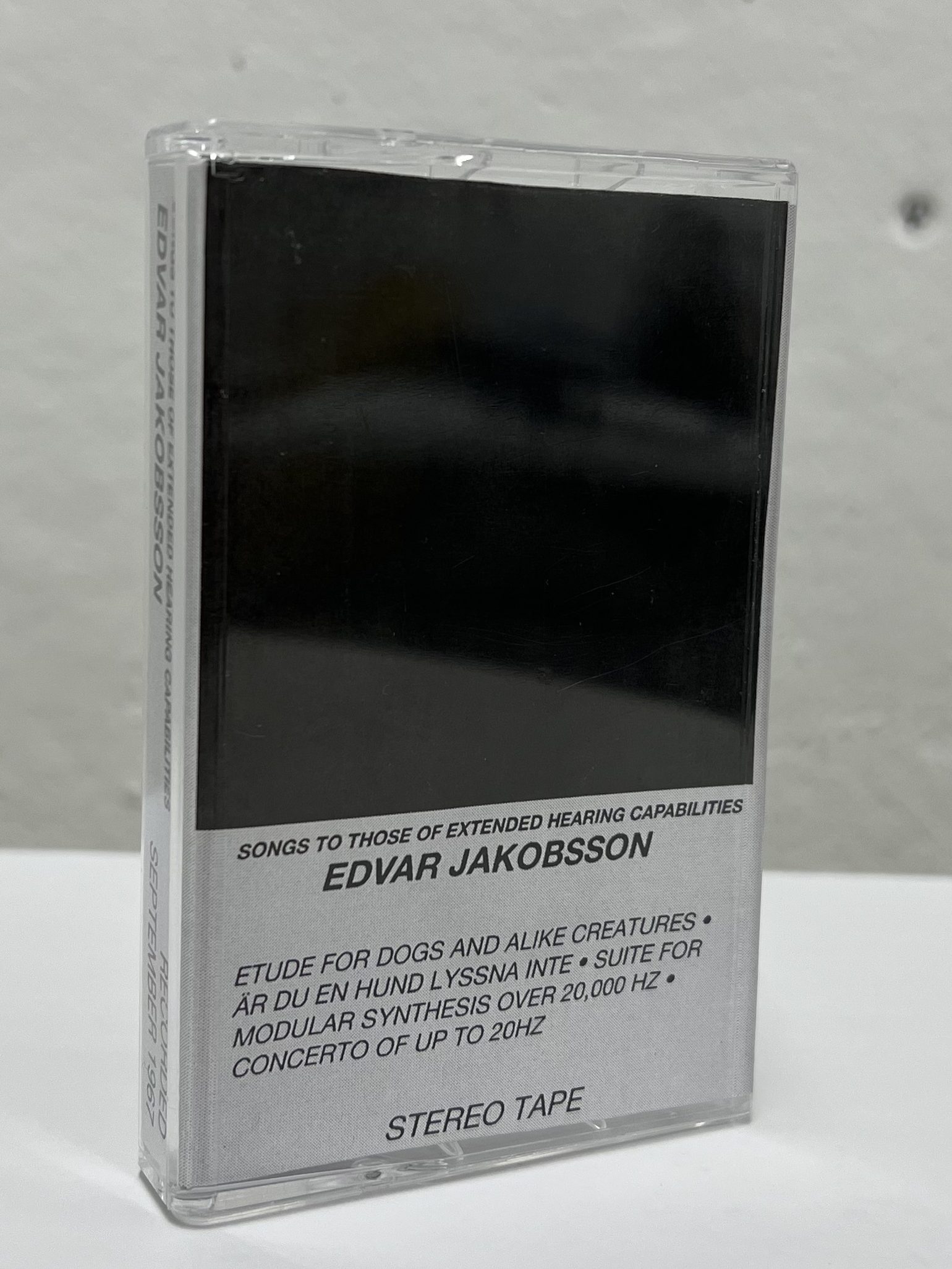
Here is the only known copy of the experimental composer, Edvar Jakobsson’s, album titled Songs to Those of Extended Hearing Capabilities. Edvar Jakobsson was a Swedish electronic musician and composer in the mid 1960s. Despite being classically trained, Jakobsson became more interested in the tones and frequencies outside of the standard range of human hearing. While the standard range of human hearing lays from 20Hz to 20,000Hz, he explored beyond this threshold. After publishing this recording, Jakobsson’s career suffered greatly, primarily due to what critics described as “not being able to hear anything.” To this day, Jakobsson’s work and innovations in music are widely forgotten.

The idea of parafiction is the act of presenting something not true to be fact. When studying this concept, I had trouble coming up with an object or piece which would illustrate my own parafiction. I decided to come up with my own story of an event or a person who was forgotten in history. The idea and story of Edvar Jakobsson started mainly as a joke on some of the experimental music composers of the time, like Wendy Carlos and John Cage. Edvar Jakobsson is what John Cage could have been if his work “4’33’’” was seen as ‘just a bunch of silence.’ My goal in creating this cassette tape was to prove the existence of this fictional character.
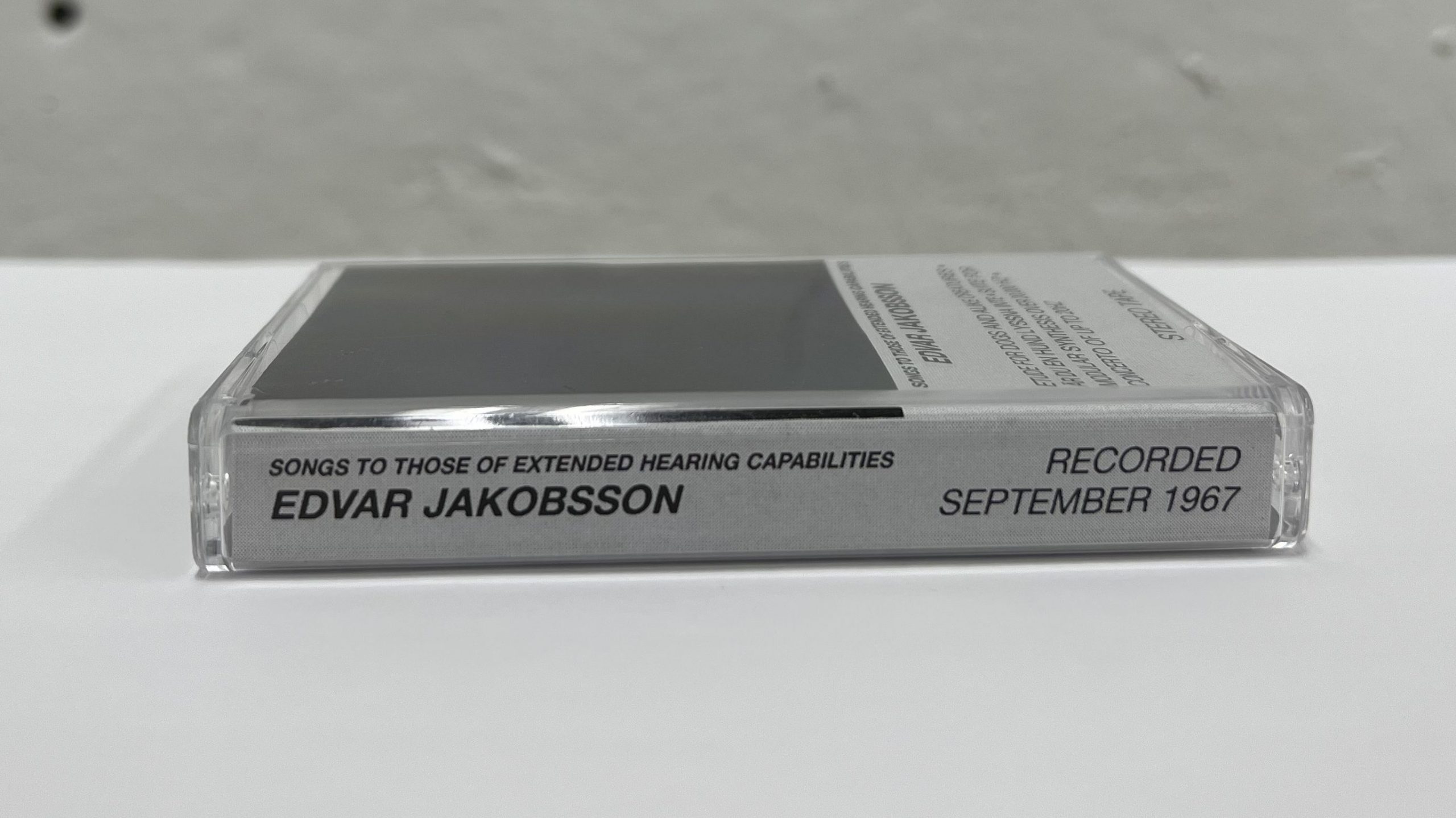
Once the story of Edvar Jakobsson was conceived, I decided to make the album. With a blank cassette, I measured the dimensions of each side of the casing so that I can make a template for a paper insert. Using photoshop, I was able to make the template and start to layout all of the images and text, all the while doing light research on the proper formatting and the events in history which correlate to the dates listed on the cover of the album. For example, Songs to Those of Extended Hearing Capabilities was released in September of 1967, three years after the production of the Moog synthesizer began and 15 years after John Cage composed “4’33’’.” After the layout of the insert was completed, I printed it out and reassembled the cassette tape and case.
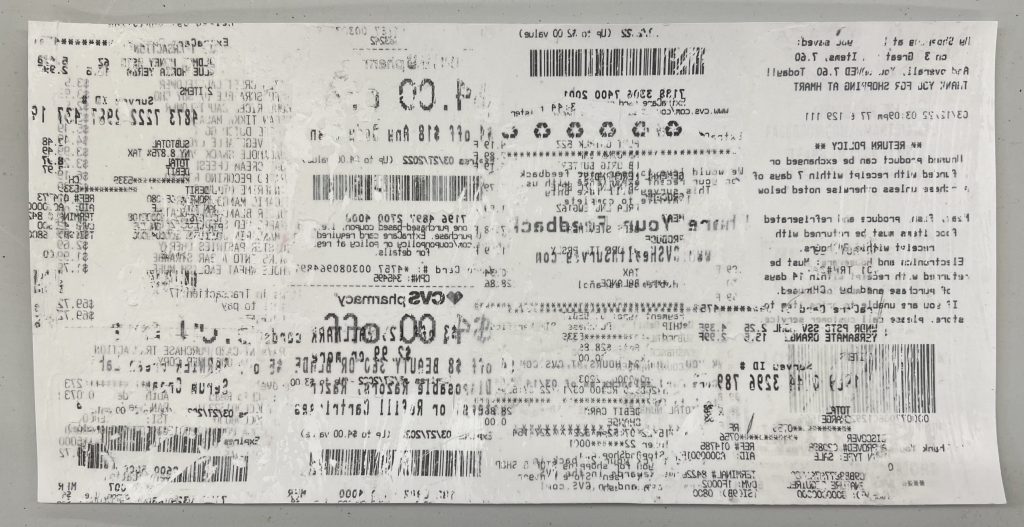
For our appropriation assignment I decided to make a new image transfer collage. This piece is made up of only found store receipts. The text, images, and barcodes seen in the piece were already existing, yet now take a new form and presentation.
My motivation for making this piece came when searching for a form and/or material to use in an appropriation. All of the receipts used were found laying around my room, at the bottom of reusable grocery bags, in the back pocket of pants hanging in my closet, and really everywhere else that I stuff receipts out of the way.
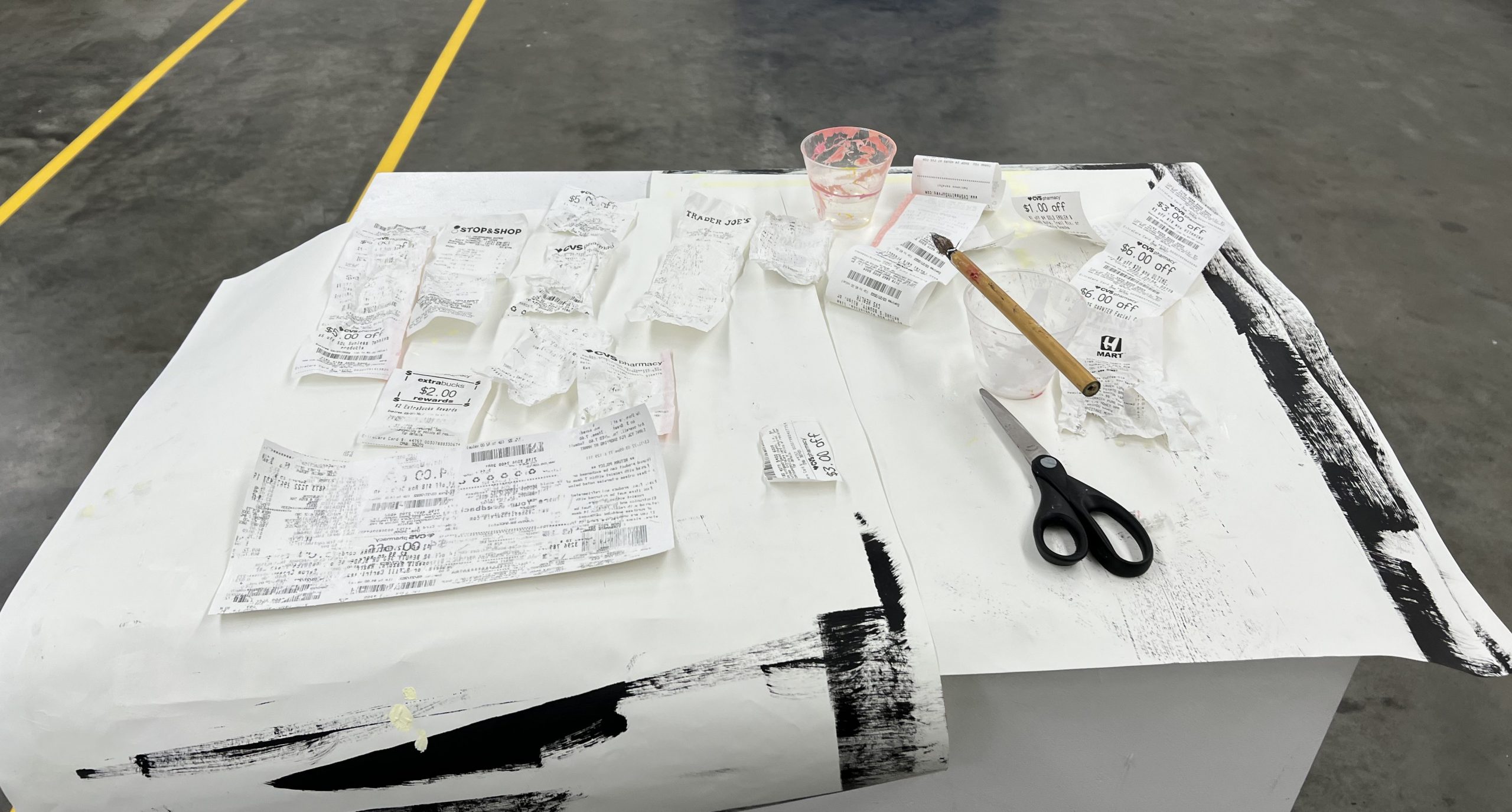

The process of creating this piece was very similar to my first use of image transferring, but in a much more simplified manner. In making this, I limited myself to strictly using mod-podge and the found receipts to create the image.
For me, this piece represents the forgotten and overlooked material purchases we make throughout our lives. Oftentimes, many people might find themselves passively consuming, whether that means eating food, buying one item from the grocery store or pharmacy, or purchasing a cup of coffee. While the text seen can be recognized as receipts, the contents of these purchases are unknown. This piece serves as the remnants of forgotten, passive consumerism in my own everyday life.
